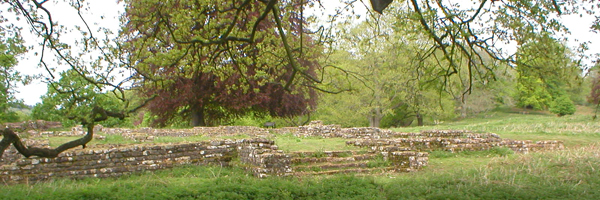
The Ancient Lydney Temple dedicated to the gods Nuada (Nodens) and Sylvanus
J.R.R. Tolkien visited the Lydney Pagan Temple in the 1920s and was fascinated by what he discovered. He spent much of his spare time exploring the landscape and delving into its rich folklore.
Overlooking the Lydney Park Estate are two hills, one crowned by the broken walls of a medieval castle, the other with the extensive remains of a Romano-British temple.
Located on the southern edge of The Forest of Dean with views of The River Severn, Temple Hill was excavated by archaeologist Sir Mortimer Wheeler, who was assisted by Tolkien.
Local tradition spoke of the ruins being the home of goblins - reputably not a place to visit at night time. The Roman metal workings on the hill were known as the “dwarf mines,” and were believed to extend far out, deep beneath the mysterious Forest of Dean.
| 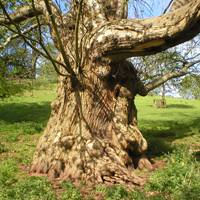 |
Much of what Tolkien saw and heard here influenced his later writings - The Hobbit and The Lord of the Rings.
The nearby“scowles”, areas of rough rock strewn passageways, mossy and overgrown with twisted trees look like the forests of Middle Earth.
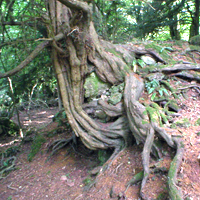
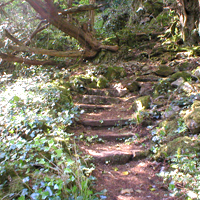
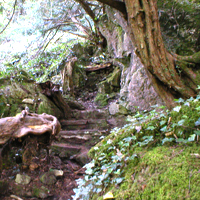
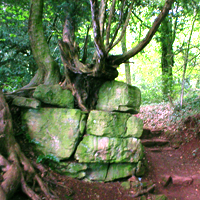
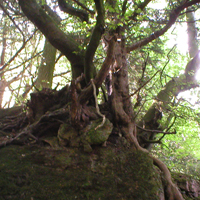
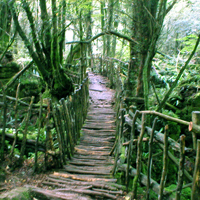
| Located on the southern edge of The Forest of Dean with views of The River Severn, Temple Hill was excavated by archaeologist Sir Mortimer Wheeler, who was assisted by Tolkien. Local tradition spoke of the ruins being the home of goblins - reputably not a place to visit at night time. The Roman metal workings on the hill were known as the “dwarf mines,” and were believed to extend far out, deep beneath the mysterious Forest of Dean. |  |

I love these images of gnarled and twisted trees, and little narrow pathways. It is easy to see that Tolkien must have been inspired by his visit to the Forest.
ReplyDelete